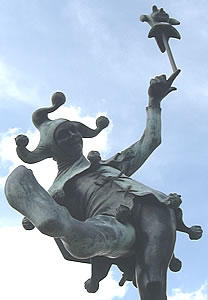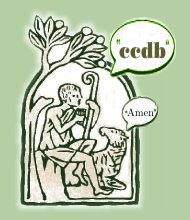How the Church Built Western Civilization
AINA has Zenit's interview with Professor Thomas Woods.
His new book offers a robust defense of the Catholic Church's contribution to Western Civilization. Including her positive relationship to science:
Q: How did it come to be that the Church is considered the enemy of progress, freedom, human rights, science, and just about everything else modernity champions, when in fact your book claims that the Catholic Church is at the origin of these phenomena?Of course, this won't matter to our Reasonable masters. They won't give up their cherished myths that easily. That would mean admiting the the Foolish Church actually participates in the truth. And, of course, they know how unReasonable such an admission would be. How could they possibly press on and achieve the Agenda with that sort of acknowledgement plagueing their conscience?
Woods: There are many reasons for this phenomenon, but I'll confine myself to one. It is much easier to propagate historical myth than most people realize.
Take, for instance, the idea -- which we were all taught in school -- that in the Middle Ages everyone thought the world was flat. This, as Jeffrey Burton Russell has shown, is a 19th-century myth that was deliberately concocted to cast the Church in a bad light. It couldn't be further from the truth.
The matter of Galileo, which most people know only in caricature, has fueled some of this fire. But it is both illegitimate and totally misleading to extrapolate from the Galileo case to the broader conclusion that the Church has historically been hostile to science.
It may come as a surprise to some readers, but the good news is that modern scholarship -- say, over the past 50 to 100 years or so -- has gone a long way toward refuting these myths and setting the record straight.
Scarcely any medievalist worth his salt would today repeat the caricatures of the Middle Ages that were once common currency, and mainstream historians of science would now be embarrassed to repeat the old contention that the relationship between religion and science in the West has been a history of unremitting warfare -- as Andrew Dickson White famously contended a century ago.
Q: Can you briefly describe the Church's particular contributions to the origins and development of modern science?
Woods: Let's begin with a few little-known facts. The first person to measure the rate of acceleration of a freely falling body was Father Giambattista Riccioli. Father Nicholas Steno is considered the father of geology. The father of Egyptology was Father Athanasius Kircher, and the man often cited as the father of atomic theory was Father Roger Boscovich.
The Jesuits brought Western science all over the world. In the 20th century they so dominated the study of earthquakes that seismology became known as "the Jesuit science."
Some Catholic cathedrals were built to function as the world's most precise solar observatories, and the Basilica of San Petronio in Bologna was used to verify Johannes Kepler's theory of elliptical planetary orbits.
The science chapter of "How the Catholic Church Built Western Civilization" is by far the longest. In addition to discussing examples like the ones I've just mentioned, it also notes that certain aspects of Catholic teaching -- including the idea of God as orderly and even mathematical, thus making possible the idea of autonomous natural laws -- lent themselves to the development of modern science.





















<< Home